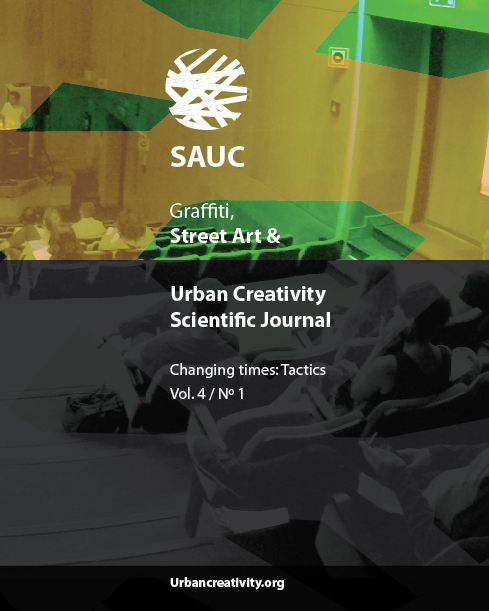Image versus writing:
from post-graffiti and murals’ assault to graffiti’s scriptural riposte in Madrid, Spain
DOI:
https://doi.org/10.25765/sauc.v4i1.133Keywords:
Street Art, Resistance, Writing-Image, Graffiti, Murals, CombatAbstract
The 2010s have witnessed the rise of a new aspect of street art on the world stage: institutionalized murals. Downtown Madrid is no exception, though the mural scene there remains less developed than in some other European cities like Saragossa or Paris. Forsaking its graffiti forbear’s emphasis on writing, this new trend embraces instead the power of imagery. Meanwhile in the walls of central Madrid, the writers are showing a new resilience with a variety of strategies that will ensure that the written word survives the ascent of the image in street art. This leads to a plastic discord juxtaposed—graffiti and mural, illicit and sanctioned, word and image—in an urban art scene in constant flux.
Downloads
Global Statistics ℹ️
|
116
Views
|
0
Downloads
|
|
116
Total
|
|
Downloads
Published
How to Cite
Issue
Section
License
Those authors who publish in this journal accept the following terms:
-
Authors retain copyright.
-
Authors transfer to the journal the right of first publication. The journal also owns the publishing rights.
-
All published contents are governed by an Attribution-NoDerivatives 4.0 International License.
Access the informative version and legal text of the license. By virtue of this, third parties are allowed to use what is published as long as they mention the authorship of the work and the first publication in this journal. If you transform the material, you may not distribute the modified work. -
Authors may make other independent and additional contractual arrangements for non-exclusive distribution of the version of the article published in this journal (e.g., inclusion in an institutional repository or publication in a book) as long as they clearly indicate that the work was first published in this journal.
- Authors are allowed and recommended to publish their work on the Internet (for example on institutional and personal websites), following the publication of, and referencing the journal, as this could lead to constructive exchanges and a more extensive and quick circulation of published works (see The Effect of Open Access).













